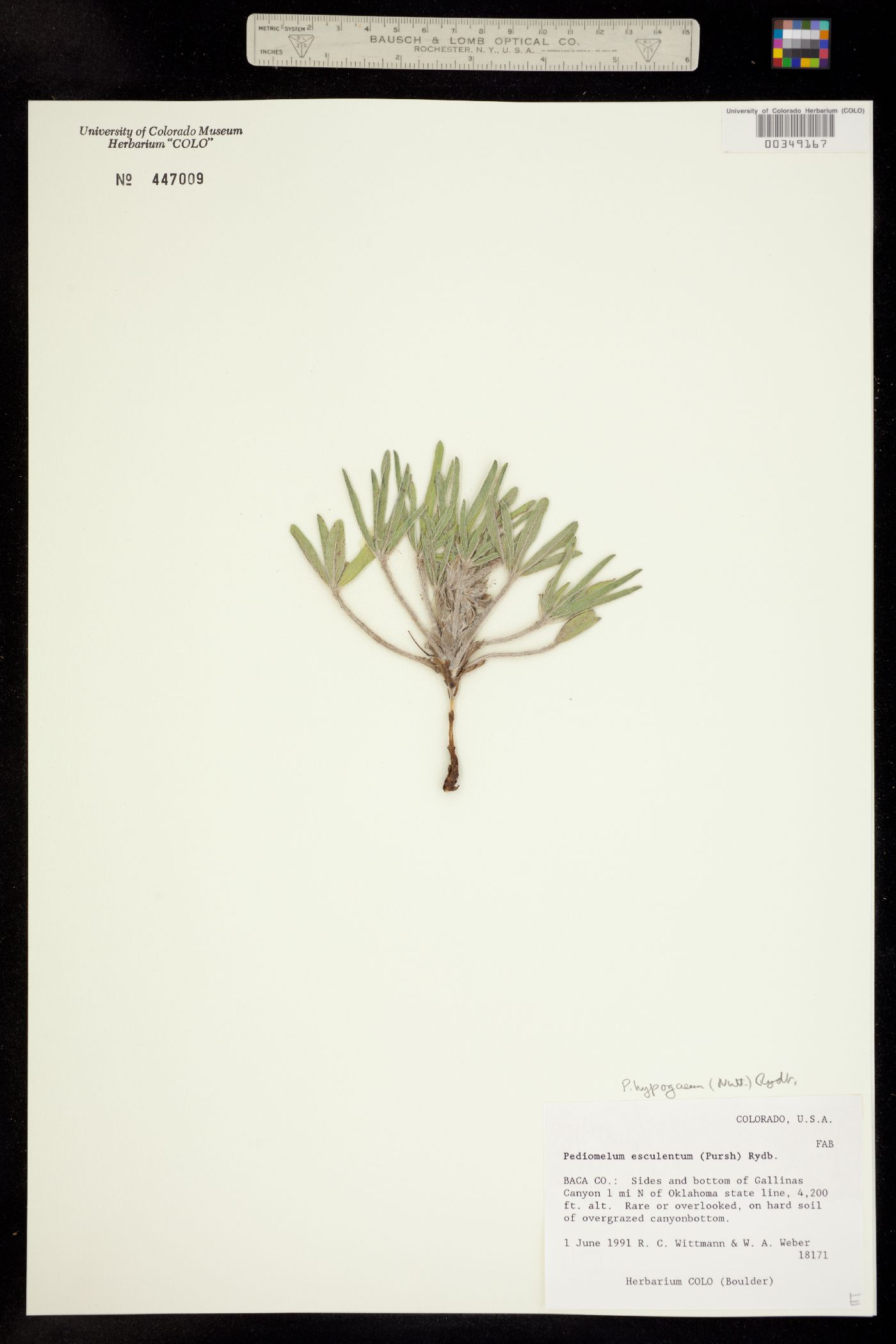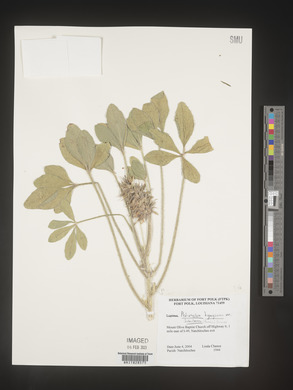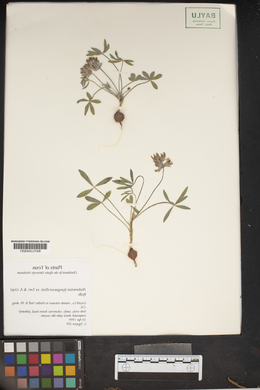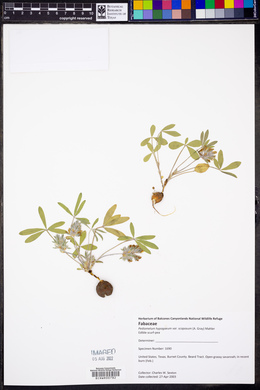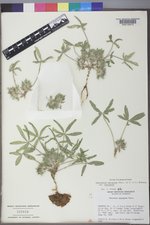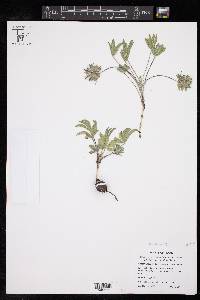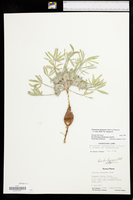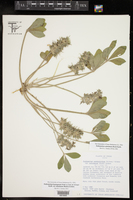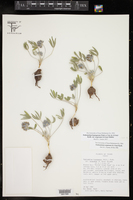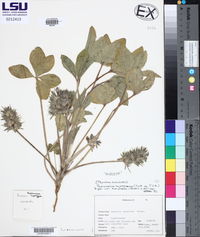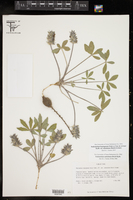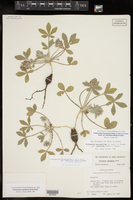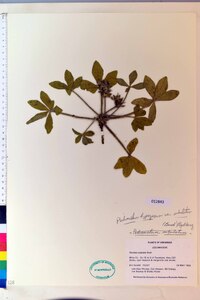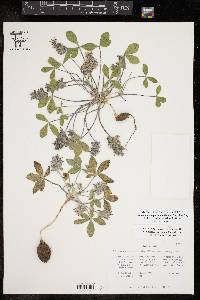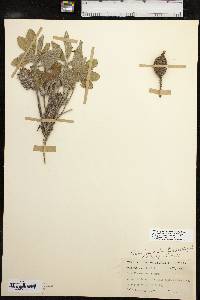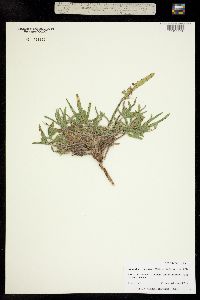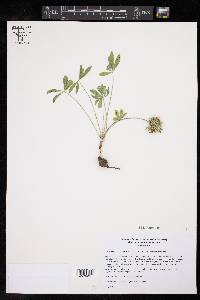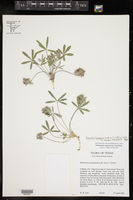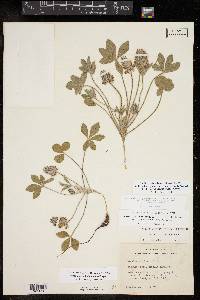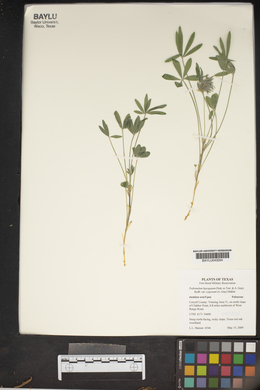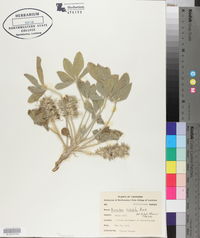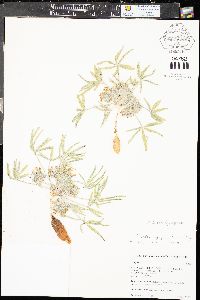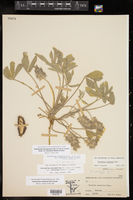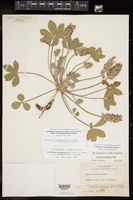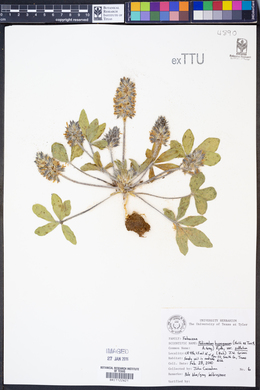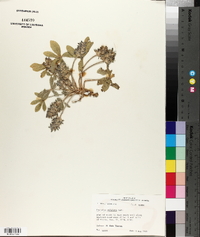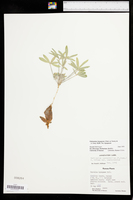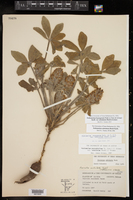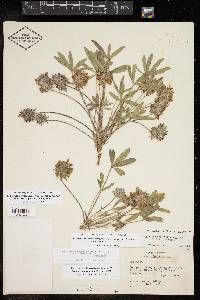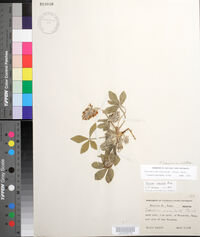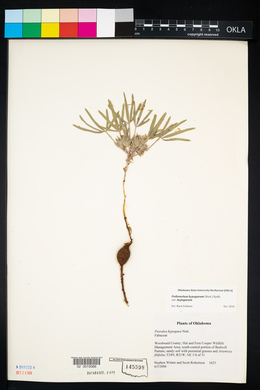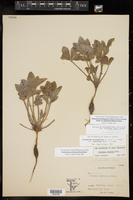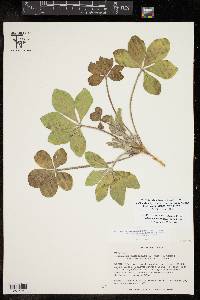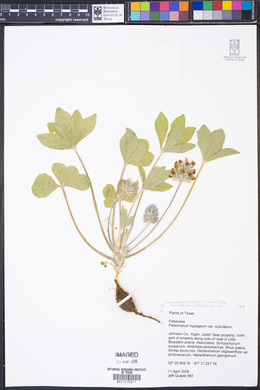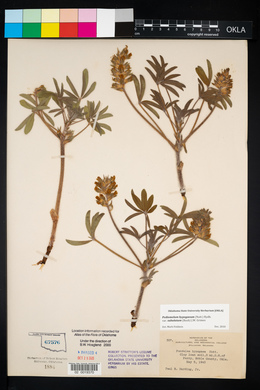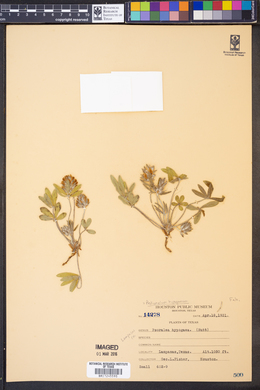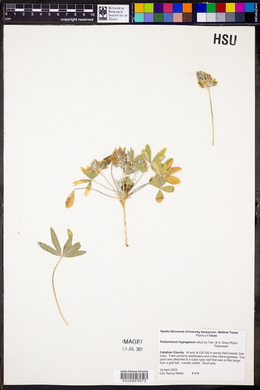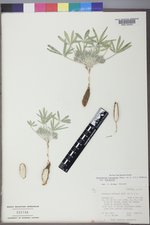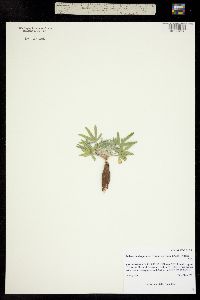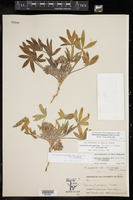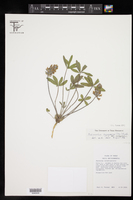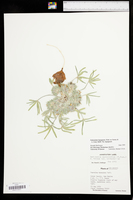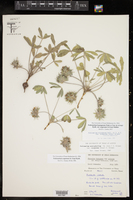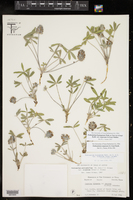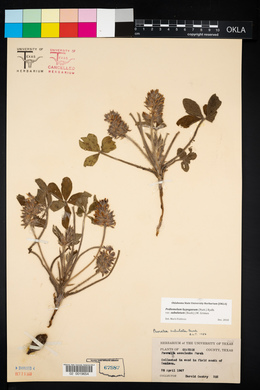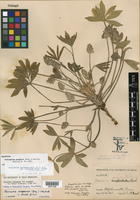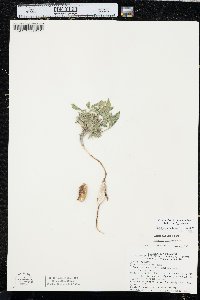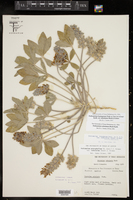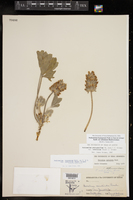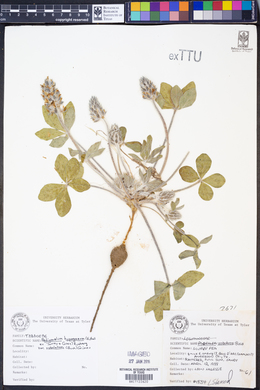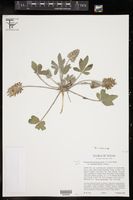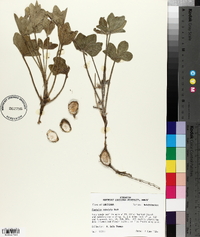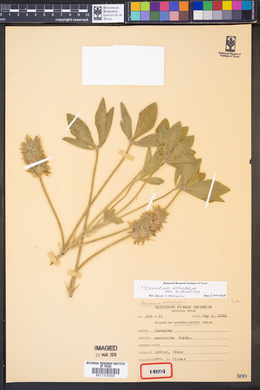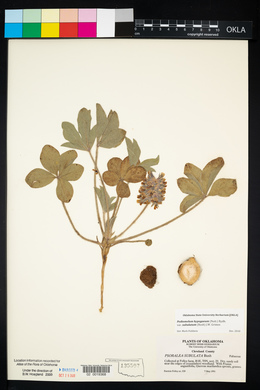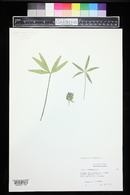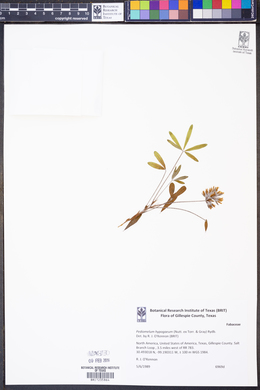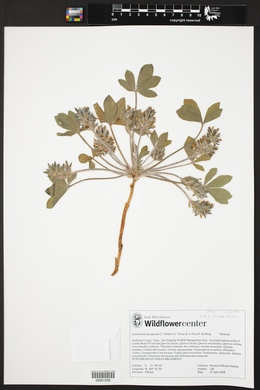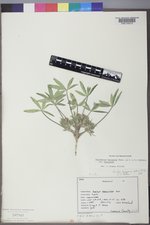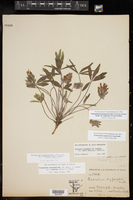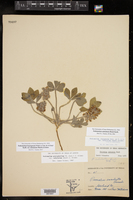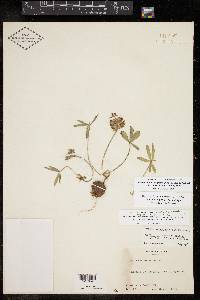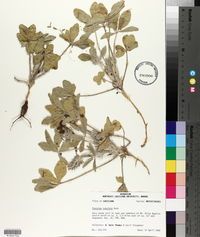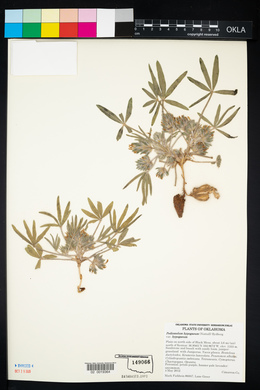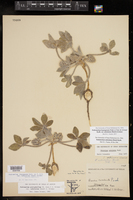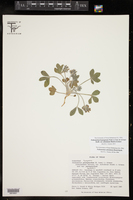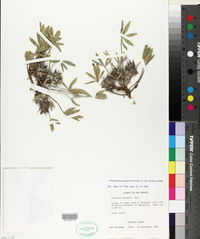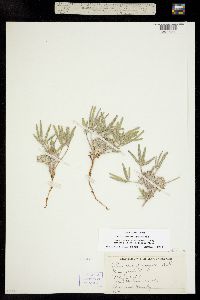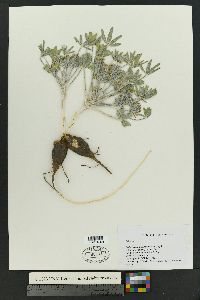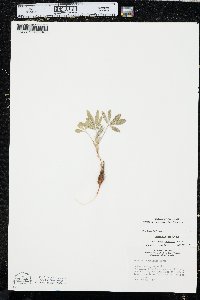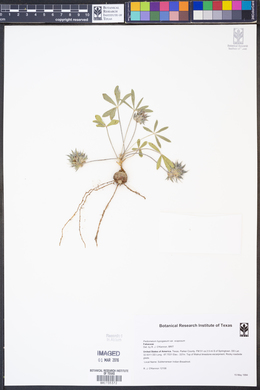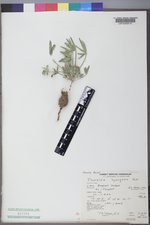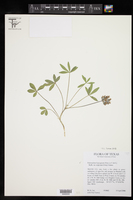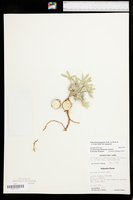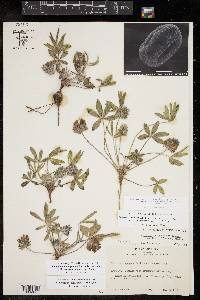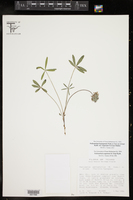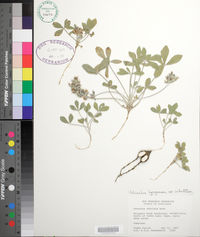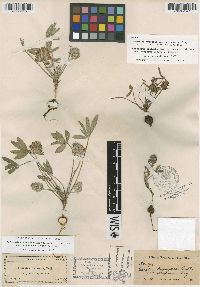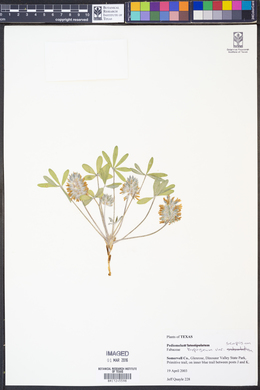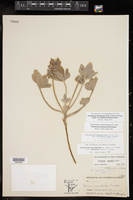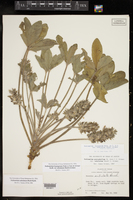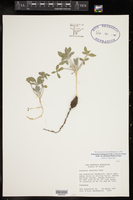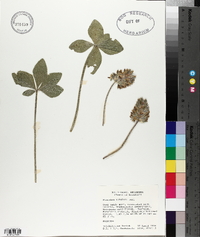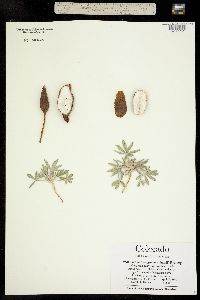
|
|
|
|
Family: Fabaceae
Subterranean Indian-Breadroot
|
Allred and Ivey 2012, Martin and Hutchins 1980, Correll and Johnston 1970 Duration: Perennial Nativity: Native Lifeform: Forb/Herb General: Perennial herb, up to 10 or 15 cm tall, from a thickened, globose or fusiform (spindle-shaped) root; stems usually absent; if present, stems are very short, up to 5 cm long, and obscured by leaf bases; herbage covered with dense whitish appressed pubescence. Leaves: Basal (attached directly to the base of the plant), or alternate and densely packed on the very short stems; leaves palmate with 3-7 leaflets per leaf (most often 5 leaflets), on petioles 4-12 cm long; leaflets linear to linear-oblanceolate or linear-oblong, 2-5 cm long, with smooth edges; lower leaflet surface hairy and upper surface nearly glabrous. Flowers: Purplish, in dense rounded spikes about 2 cm long, on a short stalk usually not long enough to elevate the cluster of flowers above the leaves; flowers about 1 cm long, with pea-flower morphology (papilionaceous); calyx hairy, consisting of a tube, 4 mm long, with 5 lobes at the top; one of the calyx lobes is noticably wider than the other four; corolla with a whitish to lavender banner petal (the wide upper petal) and darker lavender to purple wing petals (the smaller lateral petals). Fruits: Pods ovoid to globose, mostly obscured within the persistent hairy calyx, with a narrow beak that projects well beyond the calyx; containing 1 seed. Ecology: Found in plains, grasslands, and woodlands, from 4,000-5,500 ft (1219-1676 m); flowers April-July. Distribution: NE to CO, TX, and NM Notes: Look for a low, acaulescent (stem-less) perennial consisting of a basal cluster of palmate leaves with 5 leaflets each, on stalks that are longer than the leaflets; and a few dense clusters of light purple pea-flowers near the base of the plant. The leaf undersides are quite hairy,but the tops of the leaves are sparsely hairy to nearly glabrous. Var. hypogaea has very short flower stalks, no more than 3 cm long, which hold the clusters of flowers close to the base of the plant. Var. scaposa, found in the eastern part of the species' range, has longer flower stalks, usually 3-7 cm long, which hold the flower clusters at about the same level as the bottom of the leaflets. P. pentaphyllum is a similar species but has leaves that are hairy on both the upper and lower surfaces, and has longer calyx lobes (the upper 4 lobes are 10-12 mm long, compared to P. hypogaeum which has upper calyx lobes 6-8 mm long. On both species, a single lower lobe is noticably larger than the upper 4 lobes.) Ethnobotany: Unknown Editor: AHazelton 2017 Etymology: Pediomelum comes from the Greek pedion, a plain, and melon, apple, or "plains-apple," a translation of the French vernacular name pomme-de-prairie; hypogaeum is Greek for underground, alluding to the large rounded rootstock. |
This project was made possible in part by the Institute of Museum and Library Services [MG-70-19-0057-19].
Powered by Symbiota

